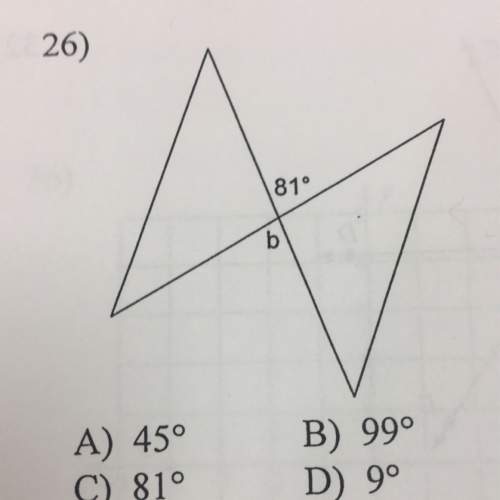Assignment
The sum of the digits of a two-digit
number is to. The result of subtracting
t...

Mathematics, 05.07.2020 21:01, kkingstone453
Assignment
The sum of the digits of a two-digit
number is to. The result of subtracting
twice the units digit from three times
the tens digit is 15. find the number.

Answers: 1
Other questions on the subject: Mathematics


Mathematics, 22.06.2019 01:00, simplemickey123
What are the domain and range of f(x)= -log5(x+2)
Answers: 2

Mathematics, 22.06.2019 01:20, blackboy21
1. why is a frequency distribution useful? it allows researchers to see the "shape" of the data. it tells researchers how often the mean occurs in a set of data. it can visually identify the mean. it ignores outliers. 2. the is defined by its mean and standard deviation alone. normal distribution frequency distribution median distribution marginal distribution 3. approximately % of the data in a given sample falls within three standard deviations of the mean if it is normally distributed. 95 68 34 99 4. a data set is said to be if the mean of the data is greater than the median of the data. normally distributed frequency distributed right-skewed left-skewed
Answers: 2

Mathematics, 22.06.2019 03:00, kittenlover5031
In this problem, we explore the effect on the standard deviation of multiplying each data value in a data set by the same constant. consider the data set 14, 6, 8, 15, 15. (a) use the defining formula, the computation formula, or a calculator to compute s. (round your answer to one decimal place.) s = 4.28 (b) multiply each data value by 3 to obtain the new data set 42, 18, 24, 45, 45. compute s. (round your answer to one decimal place.) s = 12.83 (c) compare the results of parts (a) and (b). in general, how does the standard deviation change if each data value is multiplied by a constant c? multiplying each data value by the same constant c results in the standard deviation remaining the same. multiplying each data value by the same constant c results in the standard deviation being |c| times as large. multiplying each data value by the same constant c results in the standard deviation increasing by c units. multiplying each data value by the same constant c results in the standard deviation being |c| times smaller. (d) you recorded the weekly distances you bicycled in miles and computed the standard deviation to be s = 3.8 miles. your friend wants to know the standard deviation in kilometers. do you need to redo all the calculations? yes no given 1 mile ≠1.6 kilometers, what is the standard deviation in kilometers? (enter your answer to two decimal places.)
Answers: 1
Do you know the correct answer?
Questions in other subjects:

Mathematics, 03.12.2020 22:30


Mathematics, 03.12.2020 22:30

History, 03.12.2020 22:30

Chemistry, 03.12.2020 22:30

Mathematics, 03.12.2020 22:30

English, 03.12.2020 22:30


Mathematics, 03.12.2020 22:30







